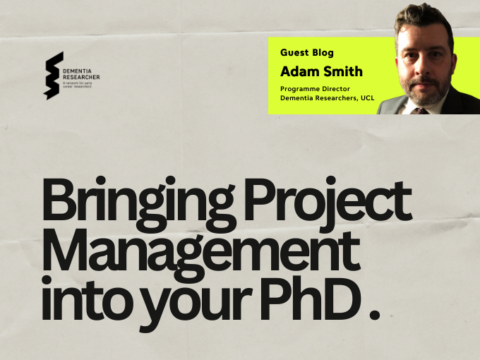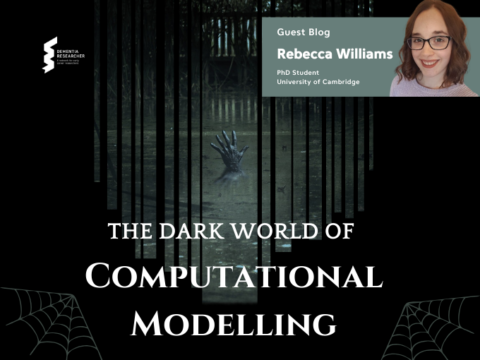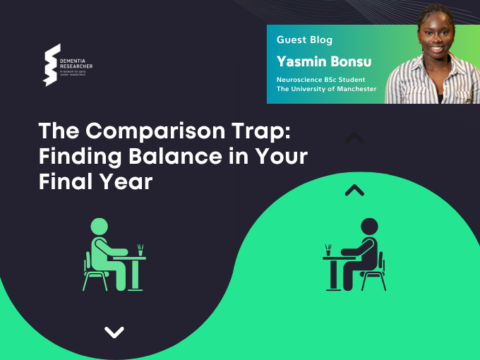Today marks World Alzheimer’s Day, an international day for building awareness and support for those affected by the most common cause of dementia. For many years, even decades now, Alzheimer’s disease and neurological research more broadly has become the white whale of pharmaceutical research: on the one hand, a huge global issue and potentially massive market with more than 50 million people living with dementia worldwide, a number only set to grow over coming decades as populations age; but on the other hand, a seemingly intractable and incurably complex condition, sucking up money with no successful trial results, and no clear understanding of fundamental mechanisms. In the last couple of years, however, that story has changed substantially, and after decades of frayed hope, meaningful progress is being made that is worth talking about. In this article, I hope to contextualise just how significant this current moment is for dementia research, and the real hope we can have for the future of Alzheimer’s disease.
Though by no means the only recent major development giving cause for renewed optimism, it makes sense to start with the therapeutic breakthroughs over the last several years. It’s important to remember here that the approvals of drugs like donepezil and rivastigmine in the late 90s, and memantine in 2003, were followed by a severe drought in drug approvals, diminishing industry investment in the space, and a recession of hope spanning almost 20 years. Drug development efforts were estimated to have a 99.6% failure rate, and in 2018, pharmaceutical giant Pfizer joined the list of companies announcing they were pulling out of neuroscience research entirely, seeing it as too risky.
Much of the research and therapeutic efforts in Alzheimer’s were focused on the amyloid hypothesis, the idea that Alzheimer’s disease is caused by a buildup of amyloid beta protein in the brain, and the cascading effects of this on brain function. With mounting failures and increasing scepticism though, it was not clear that trying to reduce amyloid was a valid strategy. It would take until 2021 – 18 years since the last drug approval – for a new drug, Biogen’s Aducanumab (marketed as Aduhelm), to be approved by the US Food and Drug Administration (FDA), and even this was marred by controversy after the trial was halted earlier in 2019 for lack of efficacy, and after its eventual approval, news came out that all the FDA’s advisory committee members voted against the effectiveness of the drug, barring one uncertain vote. It seemed that the study was as much a confirmation of the amyloid hypothesis as it was the final nail in its coffin, and substantial uncertainty about the high cost and significant side effects alongside its limited effect only seemed to cloud the field more.
In the last year, however, two further drugs have reported even more positive results. Eisai’s Lecanemab (marketed as Leqembi) showed a modest 27% slowing in cognitive decline and was approved by the FDA earlier this year, and Eli Lilly also this year reported positive results from their Phase 3 clinical trial of Donanemab (35% slower decline). On the one hand, these remain controversial – the drugs are extremely expensive and burdensome to administer, Leqembi requiring an IV infusion every two weeks. They also continue to have significant side effects with only a small effect on the disease.
Nevertheless, the slowing of cognitive decline is a meaningful change in the lives of patients on the drugs, and to have three drug approvals in three years, after 18 years of persistent failure is a huge turn of fortune. Moreover, these drugs represent something substantially new in the treatment of dementia: disease modifying therapies. Most of the early AD drugs were cholinesterase inhibitors, only able to provide symptom relief to cognitive issues by boosting attention. They had no effect on the underlying disease, and eventually became useless as the degeneration of the brain continued unchecked. By contrast, the three recent drugs are all immunotherapies targeting amyloid beta and seem to slow the rate of progression of the disease itself, proof of concept at least that we can indeed intervene in the disease progression. The advent of disease modifying therapies that change the course of the disease rather than merely masking symptoms is an enormous paradigm shift.
This spate of approvals and sudden surge of positive Alzheimer’s media stories has brought hope for many living with and alongside the disease, but perhaps just as important is the effect of these recent breakthroughs in renewing enthusiasm for Alzheimer’s disease research and investment, as the area regains the gleam of economic viability – industry sponsored trials have increased by almost 10% in the last year alone, and Merck recently signed a $1Bn deal with Cerevance to re-enter the Alzheimer’s space. Economics doesn’t quite make for heart-warming stories, but these do speak to the deep structural forces that affect the flows of funding and resources into the field, and alongside government investment growing in the US, UK and other countries around the world, they are contributing to new momentum in the race to a cure.
These therapeutic breakthroughs though, while significant, only represent a sliver of the foundations for renewed optimism around Alzheimer’s research. In recent years, research has expanded substantially from focusing primarily on the amyloid hypothesis to encompass a much broader array of theories, and recently has become better at integrating these into a complex but more cohesive picture of the brain. Beyond simply looking at other aggregating proteins such as tau, a better understanding of the contributions of glial cells (supporting cells in the brain) to the disease has helped to expand our understanding of the role inflammation plays, and how other body systems such as the gut may become involved too. Researchers also have a better understanding of how Alzheimer’s overlaps with other neurological conditions, and more of an appreciation of the diverse spectrum of pathologies that underly the disease.
Deeper analyses of the molecular genetics of the disease has also elicited a plethora of new mechanistic targets to try and develop drugs against, including the functions of mitochondria, essential for powering cells, autophagy pathways, essential for the removal of waste from neurons, and calcium regulation, essential for the healthy functioning of neurons. Gerontology, examining the process of biological aging itself, is also emerging as a significant reconceptualization, presenting mechanisms that are fundamental to the aging process as driving diseases like Alzheimer’s and another point of intervention. Alongside a wider appreciation of the pathways driving the disease is a broader assortment of therapeutic strategies, from small molecule drugs to biologics such as antibody-based immunotherapies, as well as cell therapies and more.
All in all, the Alzheimer’s disease drug pipeline is bigger and more diverse than ever before. Of the current 187 trials across phase 1-3 as of the start of 2023, 58 entered the pipeline in the last year. Aiding in these trials is the rapid proliferation of biomarkers – tests that can help determine with increasing sensitivity and specificity whether someone has Alzheimer’s (which is heavily misdiagnosed), what kind of pathology they might have in their brain, and what effect any therapeutic might be having on it. As these biomarkers move away from invasive imaging procedures like PET scans or fluids like spinal taps for CSF, and more towards faster, easier, and less invasive technologies like blood tests, retinal scans, and digital biomarkers (think smart watches and other personal health devices), the potential for early diagnosis, intervention, and even prevention becomes enormous, and significant strides are being made especially in the area of fluid biomarkers. Digital technologies will also transform how trials are conducted, improving patient public involvement, aiding recruitment into trials (a major bottleneck), and making participation easier.
This highlights the issue that, on the one hand, having treatments available for dementia will be critically important, but preventing the disease in the first place would be ideal. The last several years has seen a surge of understanding around dementia risk factors. The 2020 report of the Lancet Commission on Dementia Prevention, Intervention, and Care has had a particularly pervasive impact on the field, highlighting the potential of modifiable risk factors, including things like less education, hearing loss, obesity, smoking, air pollution, and social isolation, and suggesting that as much as 40% of dementia risk might be able to be mitigated. The recent fervour and success around drugs like Ozempic, a diabetes drugs recently repurposed for weight loss, may also spell good news for dementia prevention and prevalence, should they result in lower population levels of obesity.
This speaks to a new era of agency for Alzheimer’s disease – a sense that there is something we can do about it. For decades, the pervasive narrative when it came to dementia risk was that you would rather not know if you were at risk – after all, what could you do about it, other than worry? Now, I believe, this is changing. After the long winter of no therapeutic approvals for the disease, hope springs eternal, and the persistence of the past decades of patient research is bearing fruit.
We have a much better understanding of the molecular pathways underlying the disease, and much better tools to investigate them than ever before. These are yielding a rapidly growing and increasingly diverse array of therapeutic targets and strategies, and major breakthroughs are already occurring. Crucially, we also know more about the risk factors leading to disease, and how many of these may be prevented. The sense of momentum in the space is bringing in more energy, more optimism, and more funding – a flywheel that will hopefully continue in coming years and yield more fruit than those past. While a cure might be a long way off still, there is progress that is happening today that is tangible, important, and worth celebrating. Now we get to work on the next steps. There is much we can do.
Don’t miss the Alzheimer’s Disease International webinar launch of their World Alzheimer Report on risk reduction. 21 September, 1pm (BST) 🔗Register here: https://bit.ly/44sqIW9

Ajantha Abey
Author
Ajantha Abey is a PhD student in the Kavli Institute at University of Oxford. He is interested in the cellular mechanisms of Alzheimer’s, Parkinson’s, and other diseases of the ageing brain. Previously, having previoulsy explored neuropathology in dogs with dementia and potential stem cell replacement therapies. He now uses induced pluripotent stem cell derived neurons to try and model selective neuronal vulnerability: the phenomenon where some cells die but others remain resilient to neurodegenerative diseases.

 Print This Post
Print This Post




